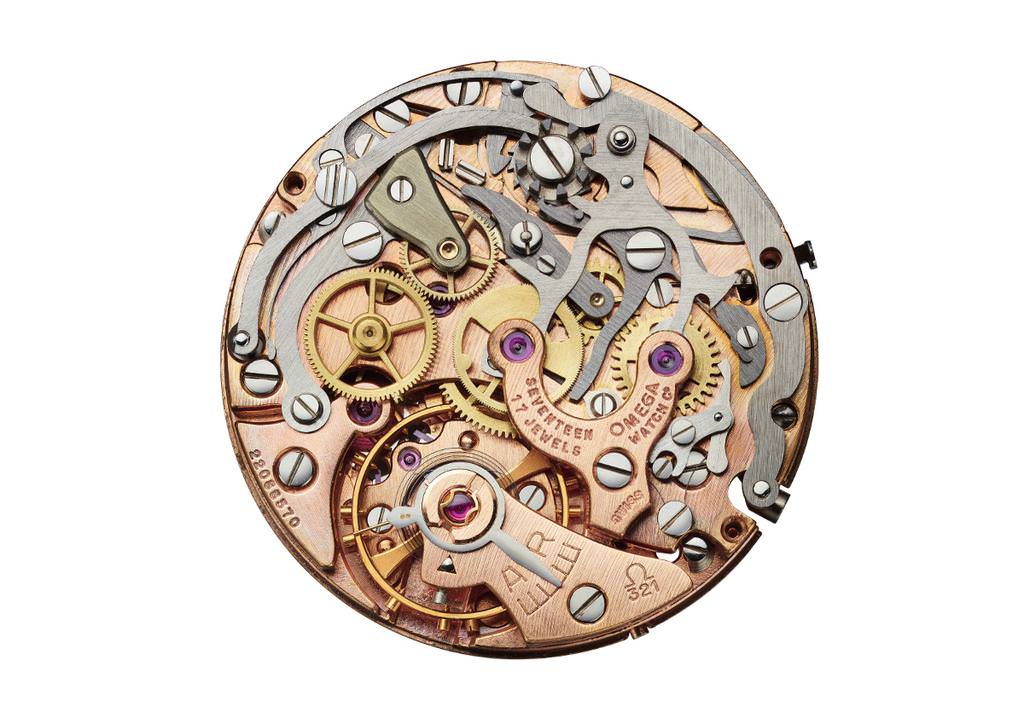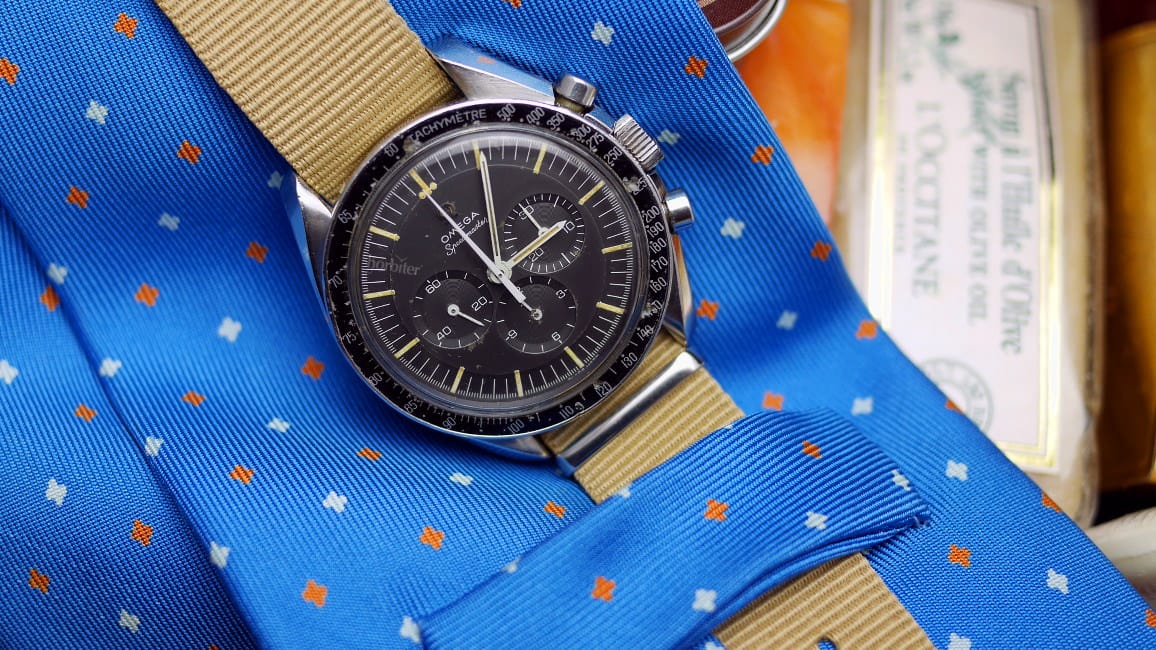The Omega Speedmaster Calibre 321 – Q&A with Federico Nolfi contributor to Horbiter® and longlife Omega collector.
Q: Federico, what does caliber 321 mean in Omega’s history?
A: The Omega calibre 321 is the essence of the Omega Speedmaster. It beats inside one of the most appreciated and admired chronographs of the world. All the changes, or the revolutions, the mechanical movement has gone through over the years have come following its case and dial’s change.
How many among you out there are truly aware of the early history of the Omega Speedmaster? I’m going to mention just a few! The case, in stainless steel, was born in 1957, featuring a 39mm wide case and straight lugs, as reference ck2915: black dial and Swiss made lettering, “broad arrow” hands (with no “professional” lettering), chrono pushers 4mm wide and Speedmaster lettering on the back.
We are at the origins of a legend. In 1959, the Speedmaster‘s case widens to 40mm, its dial features dauphine hands and reference Omega CK2998 is born, boasting a black bezel and a “500” tachy scale.
In 1961, for just 4 months it is being produced with baton hands and anthracite dial as well, a rare and highly sought after version: it is the same Omega Speedmaster Calibre 321 you may see in these photos, which is part of my personal collection.
Q: what about from 1960 and beyond?
A: From 1962 to 1965 hands are baton shaped, the lettering “T Swiss Made T” (Tritium) appears on the dial and its pushers are now 5mm wide. As of late 1965 the Omega Speedmaster lugs assume the heli design we’ve all become accustomed to today!
In this moment some rumors about Nasa testing some Speedmasters reach Omega‘s ears: it is perhaps by chance that the lettering “Professional” appears on the dial. The chrono pushers are now 6mm wide and the case moves from 40 to 42mm in diameter.
Year 1969 marks the greatest modification: the Omega Speedmaster will adopt the caliber 861, that will then be upgraded to caliber 1861, replacing definitely the caliber 321.
Q: Which Omega Speedmaster was used during the first moon landing?
A: Good question; Omega had already made a lot of versions just before that day, even if we’re in 1969, when caliber 861 had entered large scale production already, the first watch to land on the moon was equipped with a caliber 321 and wrapped around Buzz Aldrin‘s wrist, as Neil Armstrong had left his own Speedmaster on the spaceship.
Few people know that mission Apollo 13, in the words of astronauts, was saved thanks to this Omega Speedmaster that had replaced on-board instrumentation failure and helped them in setting precisely the engine turn on timing while trying to get back home.
The Speedmaster was then awarded the “Snoopy Award” the highest prize given by Nasa‘s astronauts. In 2003 Omega commemorated this achievement by launching the Omega Speedmaster Snoopy Limited Edition, one of the most sought after “Speedys” by collectors.
Q: What has made this movement so special and highly performing?
A: Caliber 321 is the result of a project by Albert Piguet and Jaques Reymond, in a cooperation between Omega and Lemania that gave life to a movement coded as 27CHROC12 (27 as its diameter, chro=chronograph, c12=12 hour chrono counter). This movement will be named as Lemania “caliber 2310” or “caliber 321” by Omega.
It is a refined caliber: manual wind with the balance wheel oscillating at 2.5Hz, 17 jewels, just 27mm wide and 6,74mm thick, Incabloc system with a 44 hour power reserve and, icing on the cake, a column wheel mechanism to operate the chronograph.
It means that the chrono is operated by a wheel in the shape of multiple columns. To make a long story short it’s all about fingers that fall into and out of the spaces between the teeth of the wheel and the biggest difference being in the labor-intensive realization process. A column wheel is made out of a small steel monobloc that is finely reworked at a CNC machinery, to give it a sort of crenellated tower.
 The end result is a smoother and more precise chrono activation. Since its production process is quite expensive this technical solution is adopted just on high end watches. It is not by chance Omega has re-introduced this device on its high-end 9300 caliber that equips the two-counter Omega Speemaster Co-Axial. And it is why an Omega Speedmaster Caliber 321 is among the most sought after Speedmaster by enthusiasts and connoiseurs who are willing to pay record hammer prices.
The end result is a smoother and more precise chrono activation. Since its production process is quite expensive this technical solution is adopted just on high end watches. It is not by chance Omega has re-introduced this device on its high-end 9300 caliber that equips the two-counter Omega Speemaster Co-Axial. And it is why an Omega Speedmaster Caliber 321 is among the most sought after Speedmaster by enthusiasts and connoiseurs who are willing to pay record hammer prices.
(Photo credit: Google, Horbiter®)
Federico Nolfi @Horbiter®

